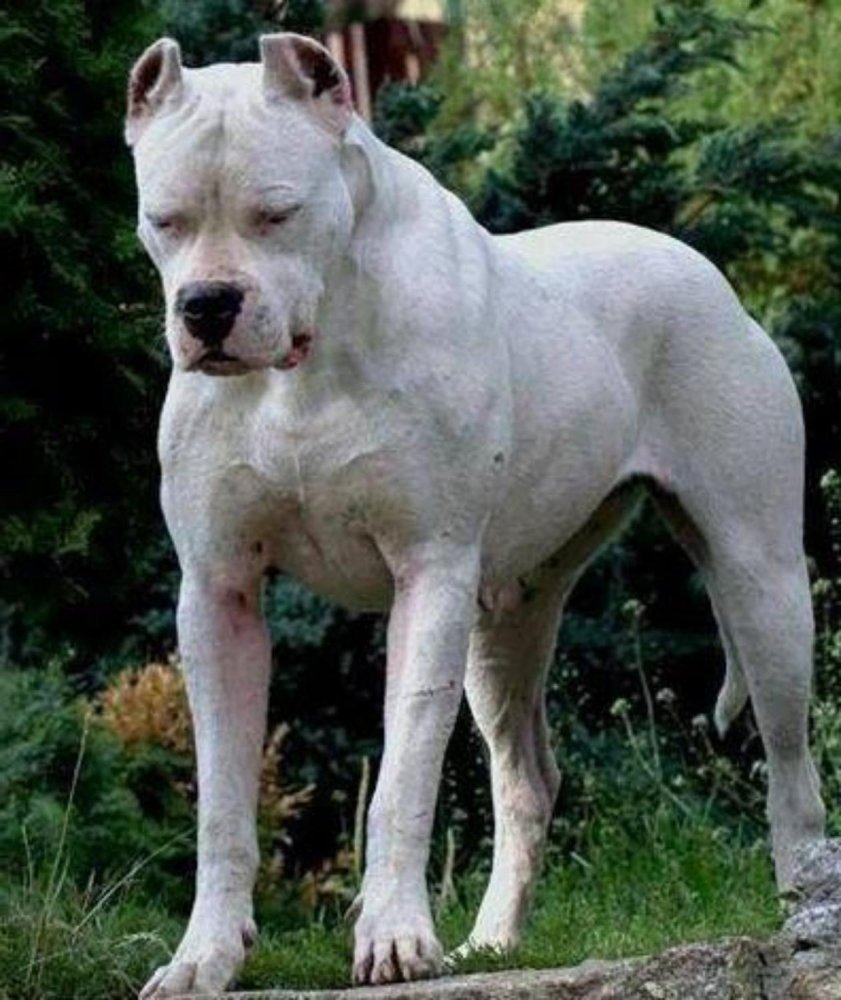- Breed Category: Working Group
- Country of Origin: Argentina
- Average Height: Males 60-68 cm, Females 60-65 cm
- Average Weight: Males 40-45 kg, Females 35-40 kg
- Average Life Span: 10-15 years
- Grooming Requirements: Low, occasional brushing
- Exercise Requirements: High, needs daily exercise
- Coat Type: Short and smooth
- Coat Color Variations: Predominantly white
- Shedding Level: Moderate
- Ear Type: Naturally floppy, often cropped
- Tail Type: Long and thick
- Temperament: Loyal, protective, and courageous
- Intelligence Level: High
- Barking Tendency: Low
- Compatibility with Children: Good with proper socialisation
- Compatibility with Other Pets: May be aggressive, needs training
- Training Ease: Requires experienced handler
- Common Health Issues: Deafness, hip dysplasia
- Dietary Needs: High-protein diet recommended
- Energy Level: Very high
- Drooling Tendency: Low
- Sensitivity to Weather: Sensitive to cold
- Overall Maintenance Level: Moderate
- Original Purpose: Big-game hunting
- Year of Recognition by Kennel Clubs: 1973 by FCI
- Apartment Friendly: Not ideal, needs space
- Best Suited For: Active families, experienced owners
- Cost of Ownership: Moderate to high
- Unique Traits: Strong prey drive, muscular build
- Cultural Significance: National dog of Argentina
- Popularity Rank: Growing in popularity
Imagine a dog that combines the strength of a bulldog with the agility of a terrier. That’s the Argentine Dogo for you. This breed is a powerhouse, known for its muscular build and striking white coat. But there’s more to this dog than meets the eye. This article will dive into the breed’s unique characteristics, rich history, and essential care tips.
The Argentine Dogo was developed in the 1920s by Dr. Antonio Nores Martinez in Argentina. His goal? To create a versatile hunting dog capable of taking down big game like wild boar. By crossing breeds like the Cordoba Fighting Dog with others such as the Great Dane and Boxer, he crafted a breed that’s both fearless and loyal.
Early Development and Historical Significance
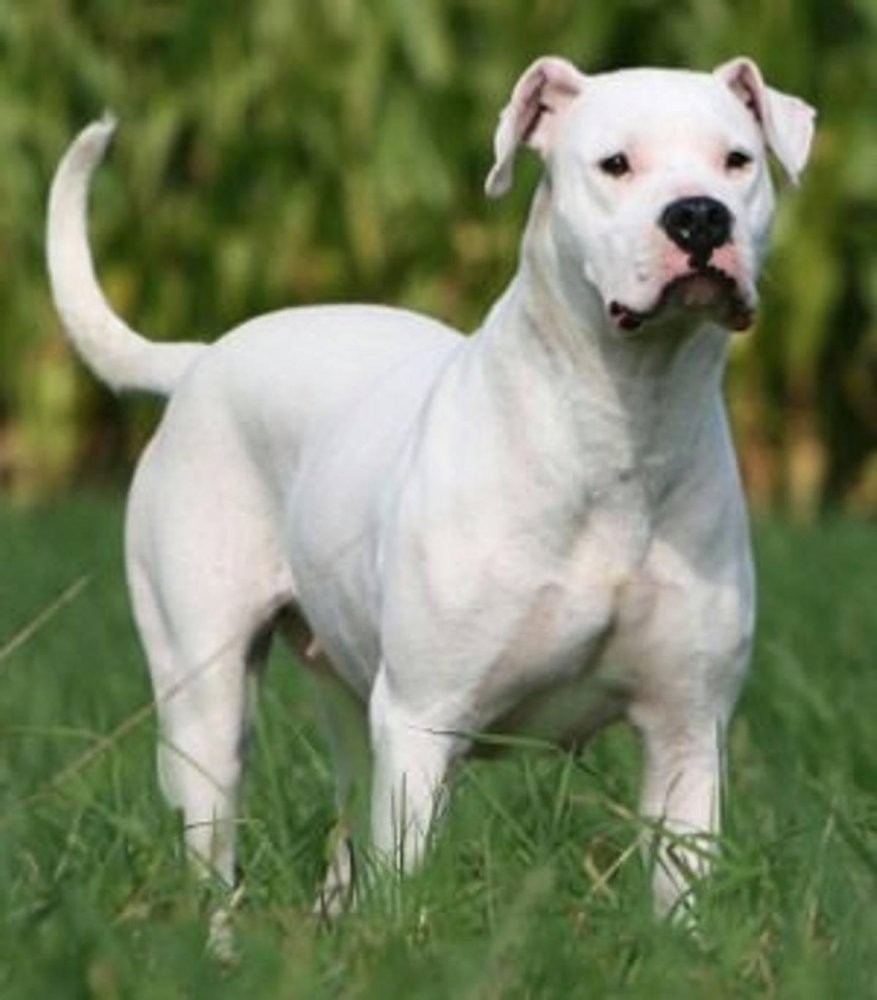
Role in Hunting and Protection
The Argentine Dogo was bred with a clear purpose: to be a formidable hunting companion. Its creators wanted a dog that could handle the rugged terrain of Argentina and take on big game like wild boar and puma. This breed’s courage and tenacity make it an excellent protector, not just in the wild but also at home. Its natural instincts ensure it remains vigilant and ready to defend its family.
Key Historical Figures
Dr. Antonio Nores Martinez, a visionary in the canine world, was instrumental in the creation of the Argentine Dogo. His dedication to developing a breed that combined strength, loyalty, and versatility was unmatched. Alongside his brother Agustin, Dr. Martinez meticulously selected breeds that would contribute to the Dogo’s unique characteristics, ensuring it was both a hunter and a guardian.
Physical Characteristics
The Argentine Dogo is a sight to behold. Its muscular build and athletic stance are complemented by a striking white coat, which is not just for aesthetics but also serves a practical purpose in the field. This coat helps the dog blend into its surroundings while hunting. With a powerful jaw and a keen sense of smell, the Dogo is well-equipped for its roles in both hunting and protection.
Appearance and Unique Traits
Size and Coat
The Argentine Dogo is a large, imposing breed. Males typically stand between 60 to 68 cm at the shoulder, while females are slightly smaller. Their coat is short, smooth, and always white, which is not just eye-catching but also practical for hunting. This white coat helps them blend into their surroundings, making them stealthy hunters.
Distinctive Markings
While the coat is predominantly white, some Dogos may have a small black spot on the head, which is acceptable in the breed standard. This spot adds a touch of individuality to each dog, though it’s not very common.
Muscular Build
One of the most striking features of the Argentine Dogo is its muscular build. This breed is all about power and agility, with a strong, athletic frame that supports its active lifestyle. Their broad chest and sturdy legs are built for endurance and strength, making them excellent companions for outdoor adventures.
Temperament and Behaviour
Argentine Dogos are known for their loyalty and protective nature. They are naturally vigilant, making them excellent watchdogs. Despite their tough exterior, they are affectionate with family members and can be gentle with children when properly socialised. However, they do require firm, consistent training to manage their strong-willed nature.
Personality and Suitability
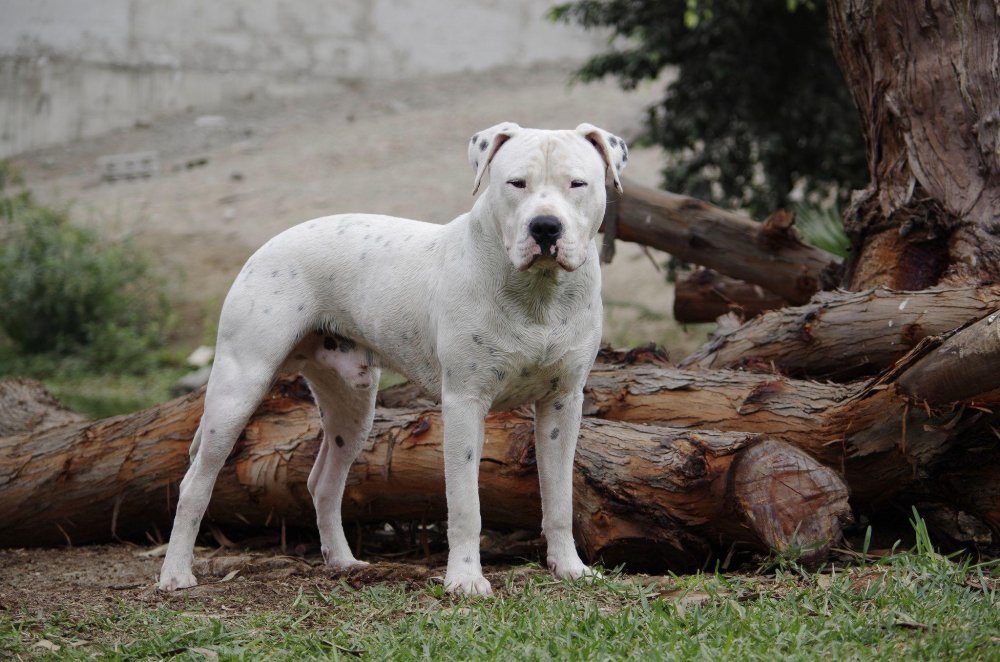
Typical Personality Traits
The Argentine Dogo is a blend of loyalty, intelligence, and high energy. These dogs are fiercely devoted to their families, often forming strong bonds with their owners. Their intelligence makes them quick learners, but it also means they need mental stimulation to keep them engaged. With their high energy levels, they thrive in active households where they can participate in regular exercise and play.
Suitability as a Family Pet and Working Dog
As a family pet, the Argentine Dogo is both a loving companion and a vigilant protector. Their history as hunting dogs means they have a strong work ethic, making them suitable for roles that require endurance and strength. They excel in environments where they have a job to do, whether it’s guarding the home or participating in canine sports.
Interaction with Children and Other Animals
When properly socialised, Argentine Dogos can be gentle and patient with children. They are naturally protective, which can be an asset in a family setting. However, their interactions with other animals should be monitored, especially with smaller pets, due to their strong prey drive. Early socialisation is key to ensuring they get along well with other dogs and animals.
Training and Exercise Needs
Training an Argentine Dogo requires consistency and firmness. They respond well to positive reinforcement but need a confident handler to guide them. Regular exercise is crucial to keep them healthy and happy. Long walks, runs, and play sessions are ideal to burn off their abundant energy. Without adequate exercise, they may become bored and develop behavioural issues.
Training, Exercise, and Health
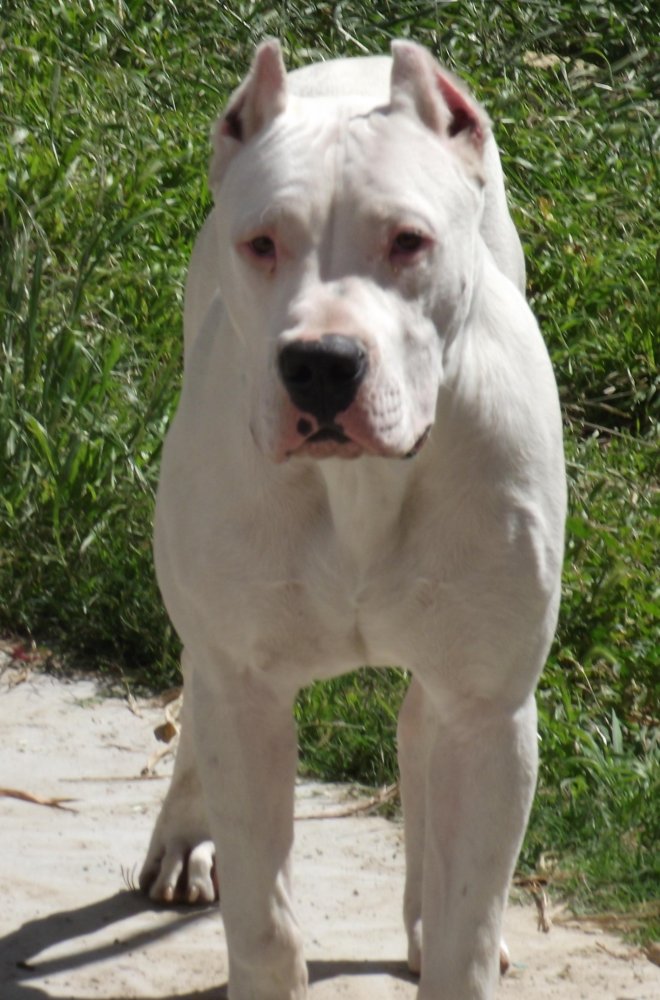
Importance of Early Training and Socialisation
Getting your Argentine Dogo started with training and socialisation early on is crucial. These dogs are naturally protective and can be a bit headstrong, so introducing them to different people, environments, and other animals while they’re young helps them grow into well-rounded adults. It’s all about setting the right foundation.
Recommended Training Techniques
When it comes to training, consistency is key. Positive reinforcement works wonders with this breed. They respond well to treats, praise, and play as rewards. Keep sessions short and engaging to hold their attention. A confident approach will help manage their strong-willed nature.
Daily Exercise Requirements and Activities They Enjoy
Argentine Dogos are high-energy dogs that need plenty of exercise. Think long walks, runs, and interactive play sessions. They love activities that challenge them both physically and mentally, like agility courses or fetch games. Without enough exercise, they might get bored and start acting out.
Health and Lifespan
Generally, Argentine Dogos are healthy dogs with a lifespan of around 10 to 12 years. Regular vet check-ups, a balanced diet, and plenty of exercise will keep them in top shape. Like any breed, they can be prone to certain health issues, so staying informed and proactive is always a good idea.
Health and Care
Common Health Issues
Argentine Dogos are generally robust, but like any breed, they have their share of health concerns. Deafness is a notable issue, often linked to their white coat. Hip dysplasia and skin allergies can also occur, so regular vet visits are essential to catch any problems early.
Average Lifespan and Health Tips
With proper care, these dogs typically live between 10 to 12 years. To keep them healthy, ensure they get a balanced diet and plenty of exercise. Regular check-ups with the vet will help monitor their health and catch any issues before they become serious.
Preventative Care Recommendations
Preventative care is key. Regular vaccinations, flea and tick prevention, and dental care should be part of their routine. Keeping an eye on their weight and providing joint supplements can help prevent hip dysplasia.
Grooming and Maintenance
Their short, white coat is low-maintenance but does require regular brushing to keep it clean and reduce shedding. Bathing should be occasional, as over-washing can strip their coat of natural oils. Regular ear checks are important, especially given their predisposition to deafness.
Coat Care and Grooming Routines
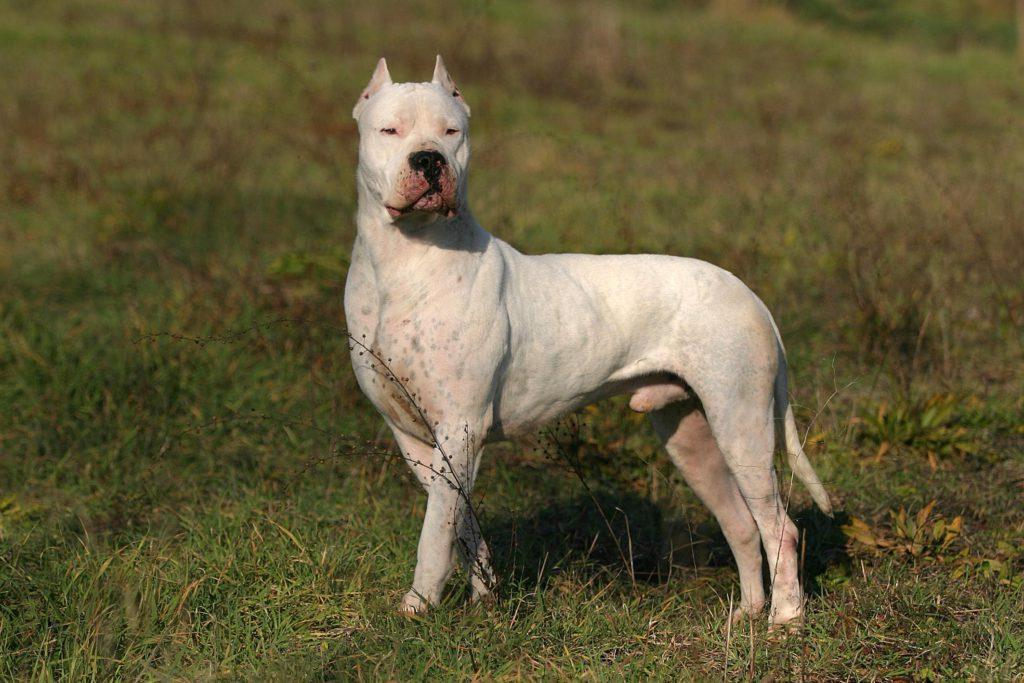
Shedding and Seasonal Grooming Tips
The Argentine Dogo’s short, white coat is relatively easy to maintain, but it does shed, especially during seasonal changes. Regular brushing, at least once a week, helps manage shedding and keeps their coat looking pristine. During peak shedding seasons, you might want to increase the frequency to a few times a week. A rubber curry brush or a grooming mitt works well to remove loose hair and stimulate the skin.
Bathing should be occasional, as over-washing can strip the coat of its natural oils. Use a gentle dog shampoo to maintain their skin’s health. Pay attention to their ears, as regular checks can prevent infections, especially given their predisposition to deafness.
Diet and Nutrition
A balanced diet is crucial for the Argentine Dogo’s health and vitality. High-quality dog food, rich in protein, supports their muscular build. Look for foods that list meat as the first ingredient. Omega-3 and Omega-6 fatty acids are beneficial for their skin and coat health, reducing the risk of allergies and keeping their coat shiny.
Portion control is important to prevent obesity, which can exacerbate joint issues like hip dysplasia. Consult your vet to tailor a diet plan that suits your Dogo’s age, weight, and activity level. Fresh water should always be available to keep them hydrated, especially after exercise.
Nutritional Needs and Feeding Guidelines
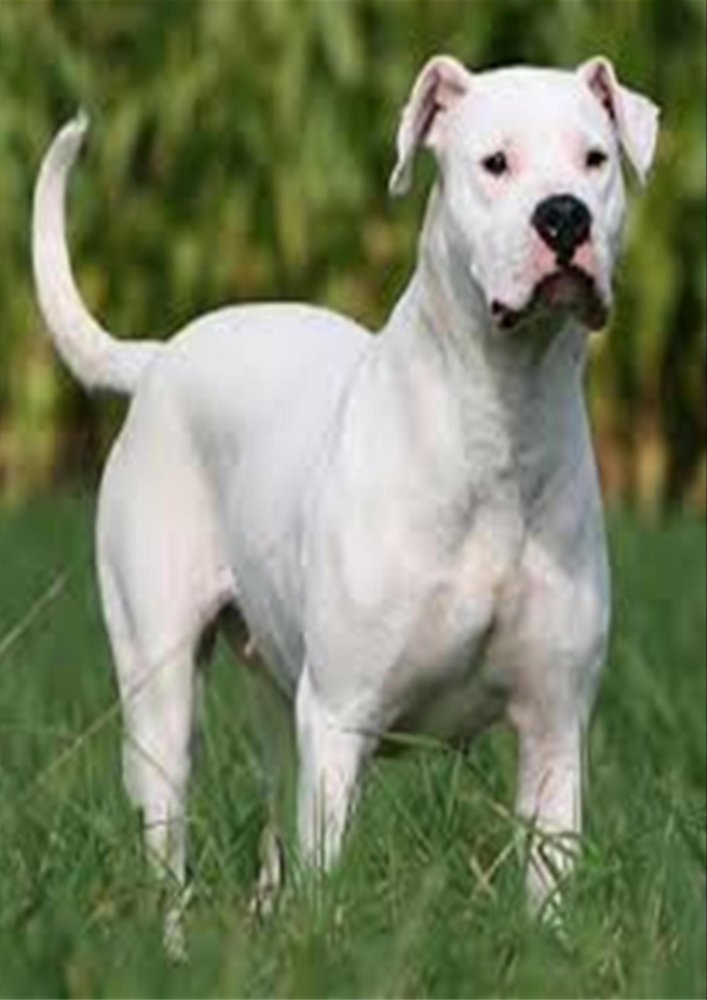
Nutritional Needs for Optimal Health
Argentine Dogos thrive on a diet rich in protein to support their muscular build. Look for high-quality dog food where meat is the first ingredient. Omega-3 and Omega-6 fatty acids are also beneficial, promoting healthy skin and a shiny coat.
Foods to Include and Avoid
Include lean meats, fish, and vegetables in their diet. Avoid foods high in fillers like corn and soy, as well as artificial additives. These can lead to allergies and digestive issues.
Feeding Schedules and Portion Recommendations
Feed your Dogo twice a day to maintain energy levels. Portion sizes should be based on their age, weight, and activity level. Consult your vet for specific recommendations to prevent obesity and related health issues.
Fun Facts and Trivia
Did you know the Argentine Dogo was originally bred to hunt wild boar? Their white coat isn’t just for looks; it helps them blend into their surroundings during hunts. Despite their tough exterior, they can be gentle giants with the right training and socialisation.
Interesting Tidbits and Famous Argentine Dogos
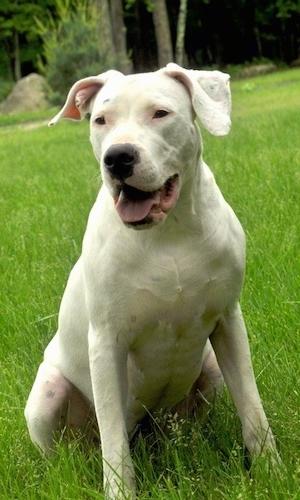
Interesting Tidbits about the Breed
The Argentine Dogo is not just a powerhouse in the field; it’s also a breed with some fascinating quirks. For instance, their white coat isn’t just a fashion statement. It was intentionally bred to help hunters spot them easily in dense forests. Despite their imposing appearance, these dogs are known for their surprisingly gentle nature with family members, especially children. They have a strong prey drive, which is why early socialisation is crucial to ensure they get along with other pets.
Famous Argentine Dogos in Media or History
In the world of media, the Argentine Dogo has made its mark. One of the most famous Dogos is “Morocho,” a real-life hero who saved two young girls from a puma attack in Argentina. This story highlighted the breed’s bravery and protective instincts, capturing the hearts of many. In film, the breed has appeared in various roles, often cast as the loyal protector or the formidable hunter, showcasing their versatility and strength.
Final Thoughts

The Argentine Dogo is a remarkable blend of strength and loyalty. This breed’s unique history and characteristics make it both a formidable protector and a loving family companion. While owning an Argentine Dogo comes with challenges, such as training and socialization needs, the rewards of their companionship are immense. With proper care and understanding, these dogs can thrive in active households, offering unwavering devotion and protection. For those ready to embrace the journey, the Argentine Dogo promises a fulfilling and dynamic partnership.
